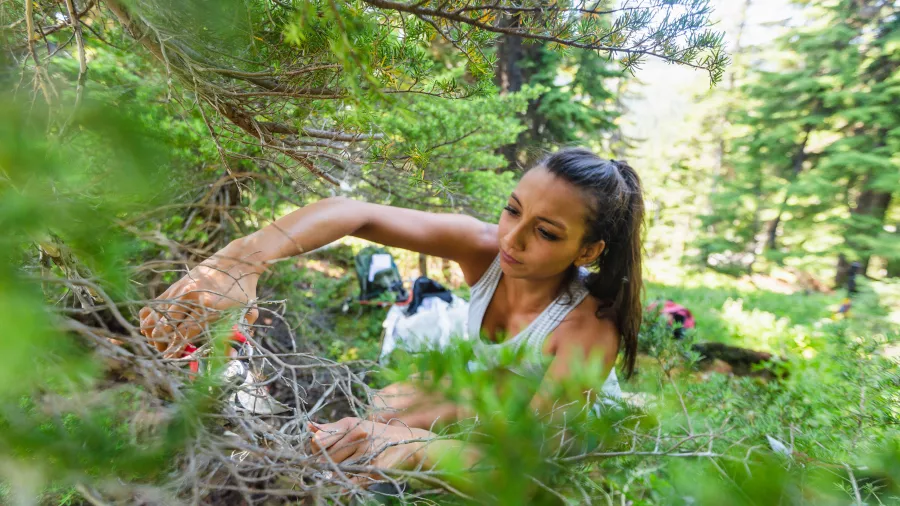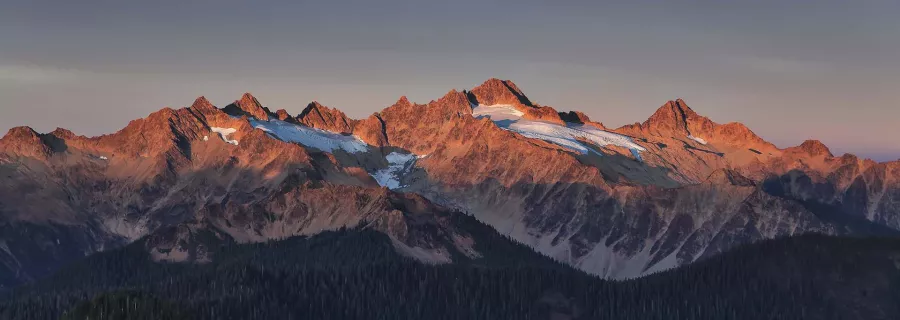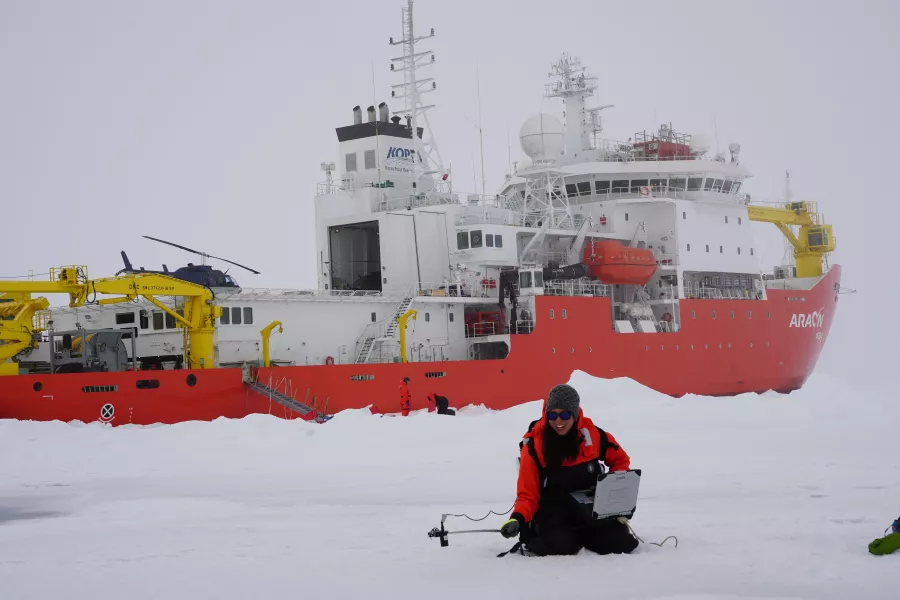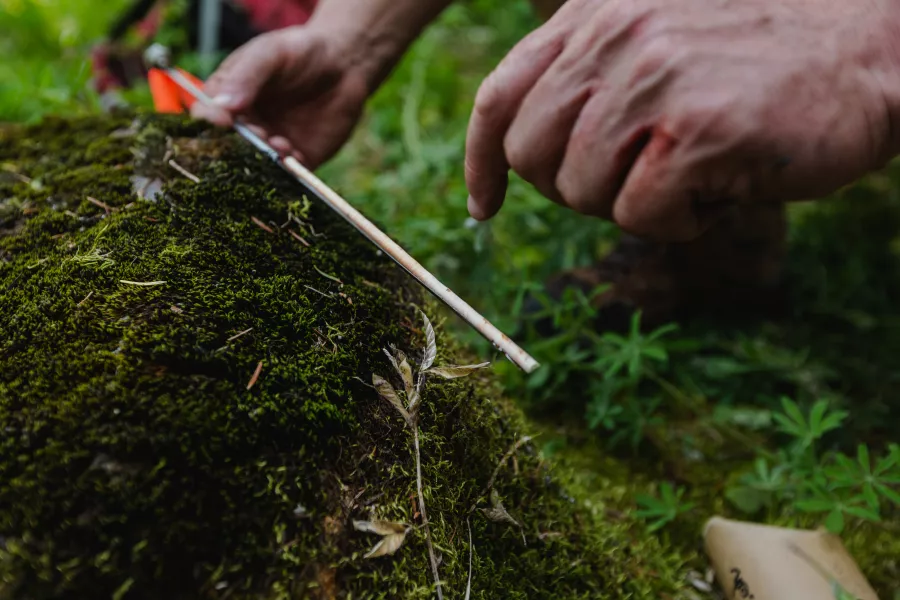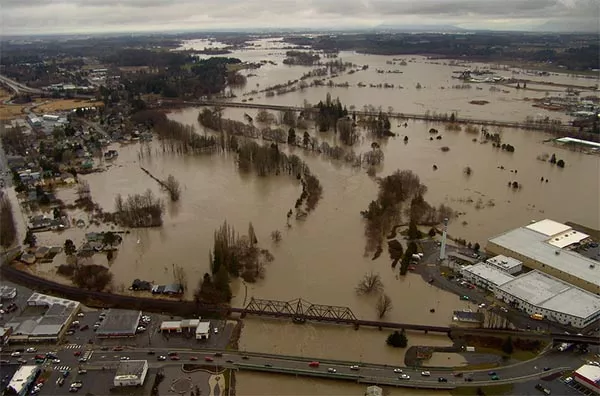The historic distribution of the planet’s water has kept the Earth’s global ecosystem humming along in a fairly predictable freeze-thaw cycle for more than 2 million years now, constantly fluctuating between major glacial periods and warmer spells while recalibrating with minor changes in weather patterns.
But the new climate reality means that water, in all its forms—droplets in the atmosphere, the Siberian permafrost, glacial ice, snowpack, and all the rain that falls during our winters in the Pacific Northwest—is delivered in new ways and to new places.
Water is the global climate’s Great Regulator. Our planet uses water to find climate balance: Cold winters here are offset by warm winters there; droughts here by wet summers there, and on and on. But as the Earth warms, so does its water, making it that much harder for those two molecules of hydrogen and one molecule of oxygen to keep the lid on climate extremes.
Ben Franklin famously said, “When the well’s dry, we know the worth of water.” Luckily, Western is one of the places where scientists and their students not only know the worth of water, but understand its role as the global arbiter of climate change. In this story, we’ll take a look at some snapshots from the thousands of hours of work these faculty and students do across the globe, from Svalbard and the Cascades to the Himalayas and the verdant valley of the Nooksack River’s South Fork, in their efforts to better understand how our planet is changing—and what can be done to stop this change before it is too late.
SNOW
If water is the planet’s main instrument to regulate climate swings, then perhaps snow can best be described as its Swiss Army knife—an invaluable tool that can perform a myriad of incredibly important tasks. Eventually, every flake of snow that falls will melt – but how long it takes to do so, and the journey it takes along the way, is crucial to understanding why it is so important to the global climate.
Falling snow forms alpine snowfields that shelter a variety of wildlife in the summer. Snow gets compressed into the sky-blue ice of glaciers and forms a reflective mantle that deflects some of the sun’s energy to keep temperatures as low as possible.
But the old adage “pure as the driven snow” is spot on when talking about snow’s ability to do its many important jobs.
Alia Khan, an assistant professor of Environmental Sciences in Western’s Huxley College of the Environment, is on a mission to find the whitest, brightest snow and ice on the planet.
This mission has taken her from the Andes to the Himalayas, and from the Cascades just outside Western’s door to the Antarctic, half a globe away.
Why the traveling passion for pure snow and ice? Because the whiter the snow, the less it has been tainted by the impurities of black carbon.
“Black carbon comes from the incomplete combustion of fossil fuels. When the dark-colored particles are deposited on the cryosphere—an ecosystem encompassing frozen water—they absorb more solar radiation than the surrounding snow and ice and lower the albedo,” she says.
Lower albedo means the reflective qualities of the Earth’s blanket of snow and ice aren’t able to keep the planet as cool. The global distribution of black carbon through the atmosphere (and other hugely important factors like warming temperatures) means places like the Greenland ice sheet, the second-largest chunk of snow and ice in the world behind Antarctica, is melting—fast. According to NASA, its rate of melt has reached 283 billion metric tons of lost mass each year, and scientists estimate that the total loss of the Greenland ice sheet would mean a sea-level rise of about 20 feet.
Getting a better grasp of how mankind’s use of fossil fuels is accelerating climate change remains the linchpin of Khan’s research, which this spring will take her to Svalbard, a remote Norwegian archipelago near the top of the world, east of Greenland and north of Scandinavia.
“Compared to other regions of the Arctic, Svalbard is ‘somewhat’ habitable for humans because of the Gulf Stream. But it can still get very cold in winter, and there are more polar bears than people,” she says.
But Khan isn’t going to Svalbard on a typical research trip; she, with three friends who are also climate scientists, is going to ski across it, collecting snow samples as she goes. The four women, who call themselves “the Climate Sentinels,” will traverse 280 miles of snow and ice, crossing crevasses and dodging polar bears—all to get a better understanding of the damage being done to the Arctic by black carbon.
While sampling under-observed regions is the primary focus of the trip, Khan says there is another focus as well.
“I hope we can inspire the next generation of female polar scientists,” she says.
Follow the expedition through April and May at climatesentinels.com.
ICE
Mount Baker’s glaciers are disappearing, and Western faculty such as Doug Clark (Geology), Andy Bach (Environmental Studies) and graduate students Monica Villegas and Liza Kimberly are working to better understand not only why this is happening, but how quickly.
“The glaciers on Baker are receding at an alarming rate,” says Bach flatly. “In the 20 years I have been studying them, I have seen huge changes. The more information we can gather about how quickly these glaciers are shrinking, the better we can understand and document how climate change is impacting our local environment.”
Clark says glaciers, by their very nature, are slow to respond to climate change, either warming or cooling.
“It takes about 10 to 15 years to start to move the needle one way or another on a typical glacier and have it respond,” he says. “‘Glacial’ is a term for a reason … they are usually slow to do anything like grow or recede.”
Clark and Bach are measuring different elements of Baker’s glaciers. Clark is seeking to measure the actual physical mass of its current glaciers, whereas Bach is looking at ways of finding out how quickly they are receding.
Villegas, Bach, and undergraduate assistants Marissa Wall and Keith Martin spent this past summer focusing on the rate of retreat of Mount Baker’s Easton Glacier, a massive tongue of ice on the mountain’s south flank.
Villegas’ research focuses on mapping the age of the trees in the empty trough below the toe of the glacier; using cores from the trees to graph their age shows how the glacier has retreated and at what rate.
“Each core is like an almanac into that tree’s life,” Villegas says. “We can tell so much about the weather patterns that contributed to the behavior of the glacier from looking at those rings.”
Her initial results show that Easton has retreated almost 3.5 kilometers in the last 150 years alone—lightning fast for a glacier that now measures about 2.3 square kilometers.
“For a glacier the size of Easton to have retreated that far in that amount of time is stunning,” Bach says.
Those evergreen almanacs seem to point to the same conclusion that Clark is finding as he and Kimberly measure the mass of glaciers like Easton, manually installing what are called ablation stakes through meters of snow and ice in an effort to ascertain “glacial mass balance.” A glacier with a balance of zero is adding as much snow and ice in its upper half as it is losing through the process called ablation at its bottom half. A decade or so of positive mass will cause a glacier to grow, while an interval of negative mass balances will cause it to shrink, and sadly the forecast for Baker’s glaciers remains gloomy.
“We can’t make climate change reverse overnight,” Clark says. “Many of our glaciers are going to keep shrinking for the foreseeable future no matter what we do; some amount of future warming is effectively ‘baked in’ to the climate system at this point. But we can put in place efforts to mitigate these changes, to communicate what we find, and to understand what those findings mean. The science is clear. We just have to communicate it effectively to the broader public.”
In the meantime, all the ecosystems that benefit from glacial runoff will have to make do with less, from river systems and the salmon that spawn in them, to cities that pull drinking water from lakes fed by ice and snow, to irrigation and agricultural needs.
RAIN
Numbers In, Numbers Out.
NINO.
The concept of NINO is what makes Robert Mitchell’s research really work. Mitchell, a professor of geology at Western, specializes in watershed hydrology and numerical modeling—the craft of using data to plug into a custom-built computer simulation that results in a years-ahead forecast for the rain and snow on a given area.
But for the climate model to work, it needs reams of accurate data, both historical and real-time, and forecasted climates through the end of the 21st century.
NINO.
“The more numbers I have, and the more accurate those numbers are, the better the model,” he says. “That shouldn’t be surprising. But what is surprising to some people is how much data is takes to make the model work.”
Mitchell is currently doing modeling work on two important regional watersheds: the South Fork of the Nooksack in Whatcom County and the Stillaguamish in Snohomish County. Both of these watersheds feature mountain systems that feed their rivers through seasonal snowfields as opposed to glaciers, and, alarmingly, what his numbers show is indicative of what is occurring elsewhere on the planet: those high altitude snowfields, such as those on the Twin Sisters range east of Acme that feed the South Fork, are getting more precipitation as rain and less as snow.
“As anyone who lives around here knows, we’re often right at that temperature point where incoming storms could produce either rain or snow. And sure, in the middle of the winter, during the coldest months, precipitation falling at elevation on the Sisters will fall as snow,” he says. “But whereas historically we might have seen a lot of additional snowfall in the fall and spring, our projected numbers show that more than likely, a lot of that precipitation will increasingly fall as rain, especially in the lower elevations that currently get snow in the winter.”
Mitchell gathers his data from a variety of established sources, from historical data to just-off-the-mountain sampling work by faculty colleagues such as Doug Clark—and runs 20 different meteorological scenarios representing future warming climates, including best-case, worst-case and most-likely case examples for each basin.
“It doesn’t take much of a nudge upwards in temperatures to have a pretty big impact on those snowfields,” he says, pointing to a map of the Sisters which shows current typical snow levels as large white patches on the upper half of the mountain. Under most future climate scenarios, the white areas of the map shrink drastically, meaning less snowmelt in the spring and summer.
Less snowmelt means a lower, warmer South Fork in the summer months, during the river’s highest recreational and agricultural use and the endangered Chinook salmon’s summer run.
“And while this is an issue for the salmon, it’s going to also be an issue for all the towns along the Nooksack in the fall and winter,” Mitchell says. “Because snow is stored like a moisture bank in the winter. It releases slowly as it melts over the spring and summer. Rainfall isn’t the same way; moisture that falls as rain instead of snow presents a new problem for all the communities downstream in terms of potential flooding. And the reality is that the South Fork basin isn’t unique in this regard; many of the watersheds in Western Washington face this same kind of pressure.”
The concept of the moisture bank is important, because of a term that becomes more relevant as global weather patterns change: “short-term climate variability,” which at its core is simple to understand. It’s Mother Nature’s ability to throw a year or two—or even just a season—of beyond-norms weather at a region, from extreme flooding to extreme drought, from prolonged high temperatures to prolonged low temperatures.
One analogy for this kind of variability is that the world’s climate patterns are like a spinning top: As the globe warms, seasonal variability causes the top to wobble and weather patterns become dangerously unstable and harder to predict. Extensive snowfields act as insurance against short-term climate variability: They hold moisture as snow and prevent flooding, and they release moisture as runoff during drought.
Without them, an important climate safety buffer has been removed as the planet warms, says Mitchell.
What can be done? In the short term, cities and towns need to prepare for more of the kind of flooding that hit the Nooksack basin at the beginning of February and made national news. There is no way to steer the short-term climate ship in any direction other than where it is now going, he says. But Mitchell says policies could still be put into place that could slow down climate change in the long term.
“Sadly, only in this country is this even a matter of debate,” he says.
In the meantime, doing habitat-restoration work to keep the rivers as shady and as cool as possible is an option, and Mitchell says he will keep crunching the data. NINO. He just wants to see better numbers emerging from his models.
“We got ourselves into this, we can get ourselves out,” he says. “We just have to have the collective will to do so.”
Anthropogenic: Caused by humans.
Water will only grow in importance even in the verdant Pacific Northwest, so understanding how you can do your part to conserve it is a good first step. Start by fixing leaky plumbing, installing water-efficient fixtures in your home, and reducing outdoor watering.
What else can you do to help fight climate change? The burgeoning use of Citizen Science initiatives means that anyone can add to the scientific body of knowledge, in almost any field, from helping biology faculty member Robin Kodner’s Living Snow project to assisting with the Cascades Butterfly Project like Huxley’s John McLaughlin.
“Being a part of something that is working to create positive change is a great way of slipping out of that feeling of environmental pessimism,” says McLaughlin.
The bottom line, says McLaughlin: Get involved. Get active. Be a part of the solution.
In the meantime, snow will continue to fall on the peaks of the Twin Sisters above the Nooksack, and on the Easton Glacier, and on Svalbard. When and how much will likely be decided by the efforts of humanity and our global leadership in the years to come.
How will we respond?
